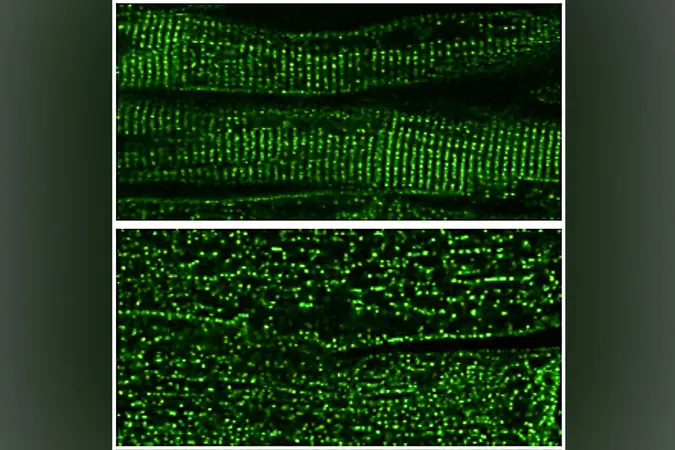
Revolutionary Gene Therapy Shakes Up Heart Failure Treatment: Are We Close to a Cure?
2024-10-24
Author: Jia
In a groundbreaking study published in Nature Biomedical Engineering, researchers have unveiled a promising approach to combat heart failure by targeting the heart's intricate structural components known as dyads. These tiny structures play a crucial role in managing the electrical signals and calcium release necessary for a healthy heartbeat. As heart failure affects millions worldwide, the hope is that advancements in gene therapy could stabilize these vital components and enhance cardiac function.
Lead study author Dr. William Pu, director of Basic and Translational Cardiovascular Research at Boston Children's Hospital, shared insights into the challenges surrounding heart failure. “While dyad disorganization is not usually the root cause of heart failure, it exacerbates the condition significantly. Preserving dyad organization could represent a major leap forward in treating various forms of heart failure,” he stated.
In previous research, Dr. Pu's team identified a critical protein called cardiomyopathy-associated 5 (CMYA5), essential for maintaining the structure and stability of dyads. Their latest discovery involves a method to deliver additional CMYA5 to heart cells—revolutionizing gene therapy applications.
The Breakthrough in Gene Therapy
The researchers faced a significant hurdle: the CMYA5 protein is too large to fit into standard gene therapy vectors. Undeterred, they tailored the gene to include only the most critical segments of CMYA5, allowing for effective delivery. In animal studies, they employed mice genetically engineered to lack CMYA5, which resulted in dyad disorganization and a notable decline in heart function. Remarkably, these issues were reversed following gene therapy, which utilized a non-infectious adeno-associated virus for delivery.
To further validate their findings, the team conducted experiments on mice with artificially induced heart stress resembling conditions known to lead to heart failure, such as aortic stenosis and high blood pressure. After treatment with the engineered CMYA5, these mice exhibited restored dyad integrity, enhanced heart function, and reduced cardiac hypertrophy—an encouraging sign that the gene therapy may prevent heart failure from developing.
A Promise for Human Applications
The researchers didn't stop there. They also explored the effects of mini-CMYA5 gene therapy on human stem cell-derived cardiomyocytes. While these cells typically struggle to produce functional dyads due to their immaturity, the introduction of mini-CMYA5 bolstered dyad formation, improved structural organization, and increased the contractile strength of the cells.
Moreover, Dr. Pu hinted at broader implications for CMYA5 gene therapy. Given its role in calcium release, there is potential for the therapy to ameliorate arrhythmias, a condition where the heart beats irregularly. Additionally, CMYA5's presence in skeletal muscle suggests it could offer benefits for various myopathies as well.
What's Next?
As the research advances, Dr. Pu's team is focused on unraveling the underlying mechanisms behind the reduced levels of CMYA5 in heart failure. By fully understanding these pathways, researchers aim to optimize mini-CMYA5 therapy, making it even more effective.
With heart failure being one of the leading causes of death globally, this research ignites hope for a future where gene therapy could play a pivotal role in treating not just heart failure but potentially other muscular conditions as well. Could this be the breakthrough that transforms cardiac care and changes lives? Stay tuned as we follow this remarkable journey toward healing hearts!

 Brasil (PT)
Brasil (PT)
 Canada (EN)
Canada (EN)
 Chile (ES)
Chile (ES)
 España (ES)
España (ES)
 France (FR)
France (FR)
 Hong Kong (EN)
Hong Kong (EN)
 Italia (IT)
Italia (IT)
 日本 (JA)
日本 (JA)
 Magyarország (HU)
Magyarország (HU)
 Norge (NO)
Norge (NO)
 Polska (PL)
Polska (PL)
 Schweiz (DE)
Schweiz (DE)
 Singapore (EN)
Singapore (EN)
 Sverige (SV)
Sverige (SV)
 Suomi (FI)
Suomi (FI)
 Türkiye (TR)
Türkiye (TR)